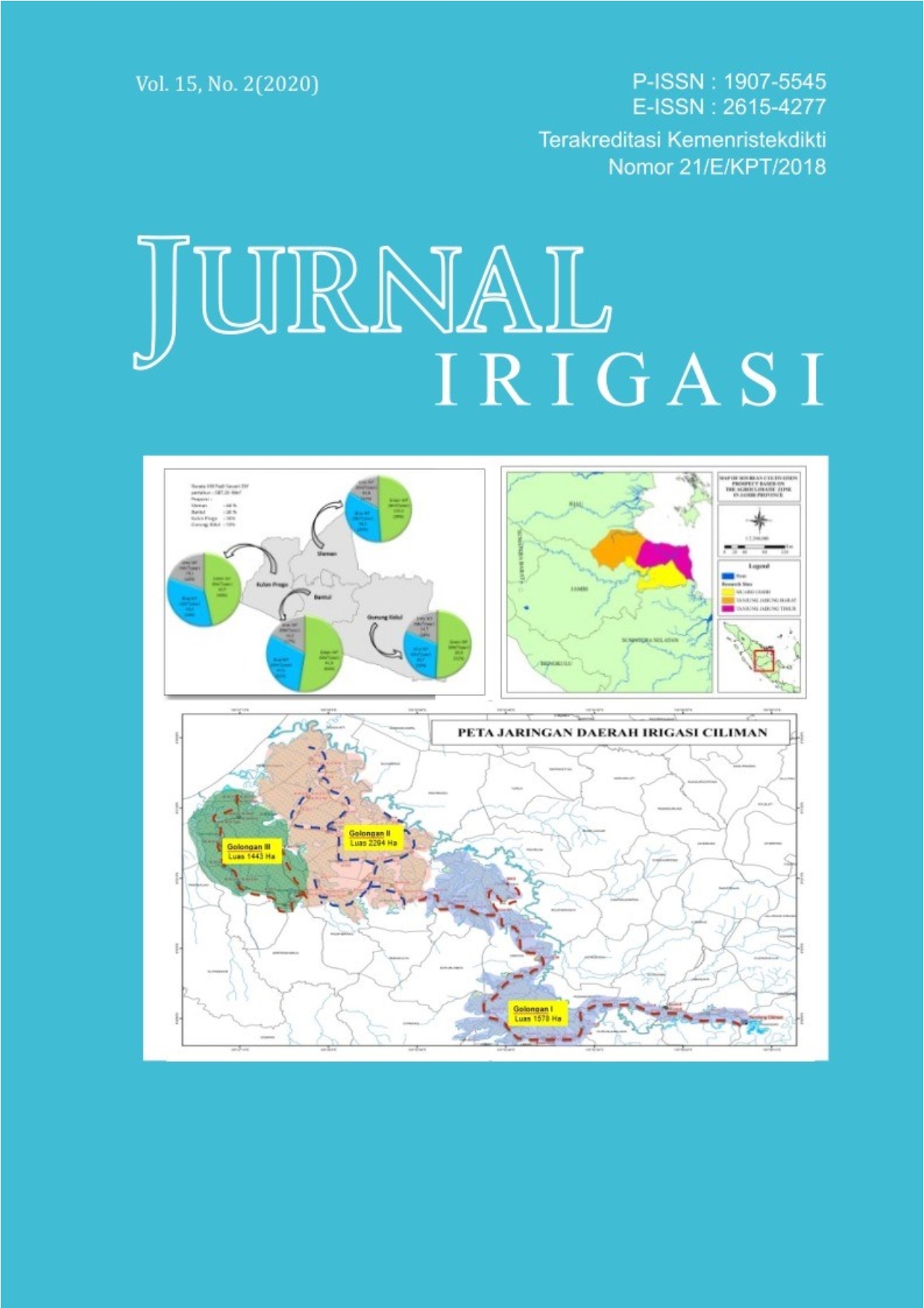Water footprint assessment on rice, corn, and soybean commodities in the Special Region of Yogyakarta area to support a sustainable agriculture system
DOI:
https://doi.org/10.31028/ji.v15.i2.121-129Keywords:
water footprint, virtual water, Pajale, Special Region of Yogyakarta, sustainable agricultureAbstract
Indonesia's population is estimated to reach 350 million by 2045, encouraging Indonesia to increase food availability by 3% every year. The Upsus Pajale (Upaya Khusus Padi Jagung Kedelai) program is one of the government's flagship programs in responding to this challenge. On the other hand, environmental pressures provide clear boundaries for implementing a sustainable agricultural process. As the two goals of the Sustainability Development Goals (SDGs) are to zero hunger and ensure access to water, concept of virtual water is present as an alternative concept along with a water counting tool needed in an agricultural production process. This research was conducted to assess water footprint for rice, corn, and soybean in the Special Region of Yogyakarta. The analysis resulted in the term water footprint assessment consist of blue water, green water, and grey water. The results showed that the annual water footprint of soybean was the highest at 2,589 m3/ton, followed by field rice, corn, and lowland rice at 1,280 m3/ton; 844 m3/ton; 841 m3/ton. The results are due to higher level of productivity resulting lower of the water footprint. The implementation of this research reveals the factors that influence the amount of water needed (Virtual Water) to produce agricultural commodities. Whereas location selection, climatic conditions, types of plants, cultivation techniques, and the use of fertilizers are factors that need to be considered to reduce water use in the agriculture production processes. Thus, the objectives of implementing sustainable agricultural cultivation can be realized.
Downloads
References
Bocchiola, D., Nana, E., & Soncini, A. (2013). Impact of climate change scenarios on crop yield and water footprint of maize in the Po valley of Italy. Agricultural Water Management, 116, 50-61. https://doi.org/10.1016/j.agwat.2012.10.009
Bulsink, F., Hoekstra, A. Y., & Booij, M. J. (2010). The water footprint of Indonesian provinces related to the consumption of crop products. Hydrology and Earth System Sciences, 14(1), 119-128.
Dainty, I., Abdullah, S. H., & Priyati, A. (2016). Analisis peluang curah hujan untuk penetapan pola dan waktu tanam serta pemilihan jenis komoditi yang sesuai di Desa Masbagik Kecamatan Masbagik Kabupaten Lombok Timur. Jurnal Ilmiah Rekayasa Pertanian dan Biosistem, 4(1), 207-216.
Direktorat Jenderal Prasarana dan Sarana Pertanian. (2015). Pedoman Upaya Khusus (UPSUS) Peningkatan Produksi Padi, Jagung dan Kedelai Melalui Program Perbaikan Jaringan Irigasi dan Sarana Pendukungnya. Jakarta, Indonesia: Kementerian Pertanian.
Foresight. (2011). The Future of Food and Farming: Challenges and Choices for Global Sustainability. London, UK: The Government Office for Science.
Gobin, A., Kersebaum, K. C., Eitzinger, J., Trnka, M., Hlavinka, P., TakáÄ, J., Zoumides, C. (2017). Variability in the Water Footprint of Arable Crop Production across European Regions. Water, 9(2), 93. https://doi.org/10.3390/w9020093
Hoekstra, A. Y. (2003). Virtual water: An introduction. Dalam A. Y. Hoekstra (Ed.), Virtual Water Trade-Proceeding of The International Expert Meeting on Virtual Water Trade (hlm. 13-23). Delft, Netherlands: IHE Delft.
Hoekstra, A. Y., Chapagain, A. K., Mekonnen, M. M., & Aldaya, M. M. (2011). The water footprint assessment manual: Setting the global standard. London, UK; Washington, USA: Earthscan.
Hoekstra, A. Y., & Hung, P. Q. (2005). Globalisation of water resources: International virtual water flows in relation to crop trade. Global Environmental Change, 15(1), 45-56. https://doi.org/10.1016/j.gloenvcha.2004.06.004
Nangimah, S. L., Laimeheriwa, S., & Tomasoa, R. (2018). Dampak fenomena El Nino dan La Nina terhadap keseimbangan air lahan pertanian dan periode tumbuh tersedia di Daerah Waeapo Pulau Buru. Jurnal Budidaya Pertanian, 14(2), 66-74.
Sun, S., Wu, P., Wang, Y., Zhao, X., Liu, J., & Zhang, X. (2013). The impacts of interannual climate variability and agricultural inputs on water footprint of crop production in an irrigation district of China. Science of The Total Environment, 444, 498-507. https://doi.org/10.1016/j.scitotenv.2012.12.016
United Nations. (2015). Open Working Group Proposal for Sustainable Development Doals (Report of the Open Working Group of the General Assembly on Sustainable Development Goals No. A/68/970). Diperoleh dari http://undocs.org/A/68/970
Wang, X., Li, X., Fischer, G., Sun, L., Tan, M., Xin, L., & Liang, Z. (2015). Impact of the changing area sown to winter wheat on crop water footprint in the North China Plain. Ecological Indicators, 57, 100-109. https://doi.org/10.1016/j.ecolind.2015.04.023
Zhuo, L., Mekonnen, M. M., Hoekstra, A. Y., & Wada, Y. (2016). Inter- and intra-annual variation of water footprint of crops and blue water scarcity in the Yellow River basin (1961-2009). Advances in Water Resources, 87, 29-41. https://doi.org/10.1016/j.advwatres.2015.11.002
Downloads
Published
How to Cite
Issue
Section
License
This work is licensed under a Creative Commons Attribution-ShareAlike 4.0 International License.
